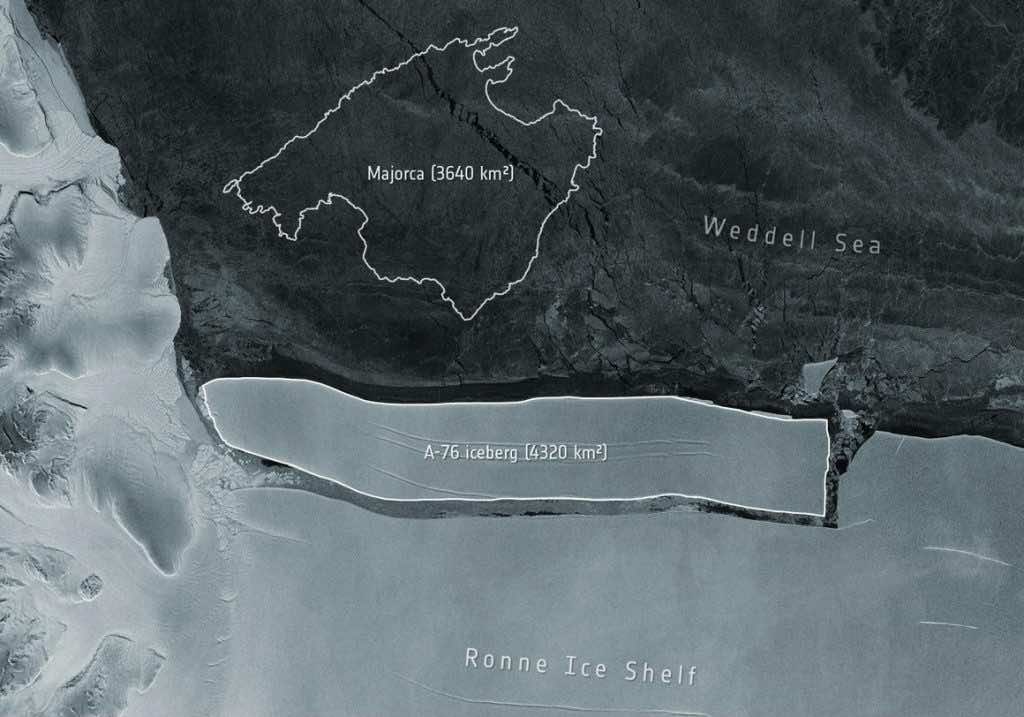Another iceberg breaks off as the climate gets warmer, increasing the amounts of warm air and also increasing the ocean’s temperature. The iceberg broke off from the Antarctic and is around 70 times the size of Manhattan. According to the European Space Agency or ESA, this might be the world’s largest iceberg right now. Icebergs usually form when huge chunks of ice break off glaciers or ice shelves.
These chunks then begin to float in open waters. The process is mostly natural but has accelerated in recent years to the increasing climate change. It is the latest in a series of icebergs that have broken from the same region. The gigantic island of ice is estimated to be around 1668 square miles in size. It is now floating southeast of South America, in the Weddell Sea.
The iceberg was spotted by ESA’s Copernicus Sentinel-1 satellite which is a land and sea monitoring satellite. The iceberg is now being called A-76 and is slightly larger than the Spanish island of Majorca. According to the US National Ice Center, A-76 began to separate from the Ronne Ice Shelf on May 13th and scientists have been keeping an eye on it since.
Scientists usually contributed such phenomenon to climate change. However, it seems the reasons are different this time. According to Ted Scambos, a research glaciologist at the University of Colorado at Boulder, the separation is not related to climate change and is part of the natural cycle. The reasoning being that since the portion of the ice shelf was already in the water. Ted also assured in his statement that the iceberg won’t raise the ocean levels either.
According to Alex Brisbourne, a glaciologist at the British Antarctic Survey, “The ice shelf is constantly being fed ice from the Antarctic continent, and eventually, chunks break off the ice shelf in this way, forming these big flat icebergs and maintaining a balance”. He also added that this isn’t always the case, saying that “Elsewhere around the Antarctic continent, however, the warming ocean is melting other ice shelves and this is allowing the ice to drain more quickly off the continent, increasing the rate of sea-level rise”.
Although this specific case may not be linked to climate change, experts argue that the separation was still hastened by climate factors, if not directly. Any loss of ice from the ice shelves is still a loss. Which will eventually increase the ocean’s level albeit slowly. According to M Jackson, glaciologist and an explorer with the National Geographic Society, “I am concerned with any ice loss today because any ice loss is part of our greater global ice loss and to me it’s terrifying. Globally, we’ve got a glacier problem; we’re losing a lot of ice”.
It isn’t clear if the iceberg will collide with any Islands while floating. Scientists are keeping a close look at A-76 and its course. Hopefully, it will eventually break up into pieces before it can impact any local wildlife.

